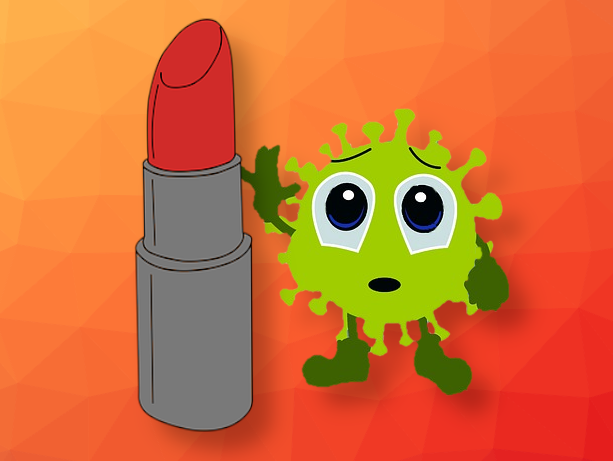Lipstick can contribute to spreading infections, e.g., when sharing a tube with others. Including natural antimicrobial ingredients in the formulation could help prevent this. Lipstick formulas incorporating natural colorants, such as red dragon fruit, can result in products with both vibrant colors and antimicrobial activity. Cranberry extract, for example, has been shown to inactivate viruses, bacteria, and fungi.
Ángel Serrano-Aroca, Universidad Católica de Valencia San Vicente Mártir, Valencia, Spain, and colleagues have developed a lipstick that combines a deep red lip tint with antimicrobial properties by adding cranberry extract to the formulation. The team mixed cranberry extract into a lipstick cream base that contained shea butter, vitamin E, provitamin B5, babassu oil (oil extracted from the seeds of the babassu palm), and avocado oil.
The resulting cream was added to cultures containing enveloped viruses such as bacteriophage Φ6, non-enveloped viruses such as bacteriophage MS2, multidrug-resistant bacteria like methicillin-resistant Staphylococcus aureus, Escherichia coli, and Mycobacterium smegmatis, and the fungus Candida albicans. Both enveloped and non-enveloped virus types were completely inactivated within a minute of contact with the cream. Multidrug-resistant bacteria, mycobacteria, and the fungus were substantially inactivated within five hours. The researchers suggest that their lipstick formula could offer protection against a variety of disease-causing microorganisms.
- Antimicrobial Lipstick: Bio-Based Composition against Viruses, Bacteria, and Fungi,
Alberto Tuñón-Molina, Alba Cano-Vicent, Ángel Serrano-Aroca,
ACS Appl. Mater. Interfaces 2022.
https://doi.org/10.1021/acsami.2c19460




Hi
Where Can i buy This lipstick
Thanks a lot
Nice regards eva